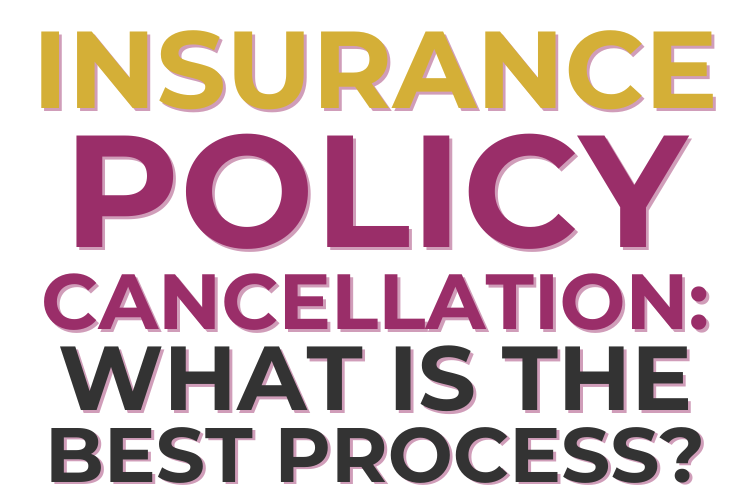Whether you’ve found a better deal, no longer need coverage, or are simplifying your finances, to Cancel an Insurance policy is a common step many policyholders take. But just like buying insurance, canceling it must be done carefully to avoid penalties, lapses in coverage, or financial complications.
Here’s a step-by-step guide on how to cancel your insurance policy the right way—clearly, cleanly, and with minimal stress.
Step 1: Know Why You’re Cancelling
Before reaching for the phone or logging into your account, pause and consider your reason for cancellation. This helps not only in communicating clearly with your provider but also in determining whether canceling is the right move.
Some of the most common reasons include:
- Switching to a cheaper or more comprehensive policy
- No longer needing coverage (e.g., selling your car or home)
- Life changes (like marriage, relocation, or retirement)
- Unsatisfactory service from your current provider
Understanding your reason will help you ask the right questions and ensure you’re not left vulnerable or uninsured.
Step 2: Review the Policy Terms
Most insurance contracts include specific cancellation clauses, and ignoring them can result in:
- Early termination fees
- Loss of refund eligibility
- Accidental lapse in required coverage
You should check:
- Cancellation notice period (some require 7–30 days’ notice)
- Refund rules for unused premiums
- Written notice requirements (some accept email, others require signed letters)
- Automatic renewal terms—you may need to opt out before the renewal date
By understanding your insurer’s specific requirements, you protect yourself from unintended consequences.
Step 3: Line Up Replacement Coverage (If Needed)
If you’re switching to another insurer—for example, auto or health insurance—secure the new policy before canceling the current one. Even a single-day gap could leave you exposed to:
- Out-of-pocket accident costs
- Legal issues (for mandatory coverages like car insurance)
- Reinstatement complications or higher premiums in the future
Always confirm the effective date of the new policy matches or precedes the cancellation date of the old one. This ensures continuity and avoids insurance gaps.
Step 4: Contact Your Insurance Provider
Reach out to your insurer through official channels—phone, in-app, or customer portal. This initial step is crucial to:
- Confirm the cancellation process
- Identify any required documentation
- Understand potential penalties or refund eligibility
- Determine where to send written notice, if needed
Be polite but firm. Ask for confirmation in writing (email or mail) that your policy will be canceled and request a timeline for final processing.
Step 5: Submit a Cancellation Request in Writing
Even if verbal confirmation is accepted, many insurers require a formal, written cancellation letter. This step adds a layer of legal protection in case disputes arise.
Include the following in your letter:
- Your full name and policy number
- Type of policy (auto, home, life, etc.)
- Requested cancellation date
- Reason for cancellation (optional)
- Your signature (if mailing or faxing)
Example:
“Dear [Insurance Company], Please cancel my auto insurance policy (Policy #123456) effective [Date]. I am switching to another provider. Kindly confirm this cancellation in writing.” Sincerely, [Your Name]
Some insurers offer templates on their websites to make this step easier.
Step 6: Monitor for Final Bills or Refunds
If you’ve prepaid premiums, you may be entitled to a prorated refund. On the flip side, if you were paying monthly, you might owe a final premium balance or early cancellation fee.
To ensure financial closure:
- Watch your account for refund deposits
- Request a final billing statement
- Keep proof of all communications and documents
Step 7: Cancel Automatic Payments or Linked Accounts
Don’t forget to unlink your bank account or credit card from the insurer’s system. Leaving autopay active could result in:
- Unexpected charges
- Reinstated policies without consent
- Delays in refunds
You can cancel online or call your bank if needed to stop further deductions.
Additional Considerations by Policy Type
Auto Insurance
Make sure your vehicle remains continuously insured to comply with state laws. Inform your DMV if required, and return license plates if canceling registration.
Homeowners or Renters Insurance
If your mortgage or lease requires coverage, make sure you show proof of the new policy to your lender or landlord.
Life Insurance
For permanent life insurance, consider the cash value implications. You may be eligible to receive a payout, or convert the policy instead of canceling it.
Health Insurance
If canceling individual health insurance, coordinate with the Health Insurance Marketplace or your employer’s benefits administrator. You might qualify for a Special Enrollment Period if switching plans.
Common Mistakes to Avoid
- Cancelling before replacement coverage starts: This can leave you exposed to legal and financial risks.
- Assuming a policy cancels automatically when you stop paying: Most insurers will keep your account active and mark it delinquent, damaging your credit.
- Not keeping written confirmation: Without this, it’s your word against theirs.
- Forgetting to inform your lender or employer: This can result in breaches of contract or employment benefit disruptions.
Also Check:
- Credit Scores And Insurance Rates: What’s the Real Connection?
- Marine Insurance: Coverage for Shipping and Boating
- How Reinsurance Works and Why It Matters
- Event Insurance: Do You Need It for Your Wedding or Concert?
- Remote workers Insurance: Why Insurance is Crucial?
Conclusion
Canceling an insurance policy isn’t complicated—but it must be handled thoughtfully. By reviewing your policy terms, securing replacement coverage, and following proper steps, you can avoid penalties and stay financially protected.
Whether it’s car, health, life, or home insurance, always cancel with a plan—not on impulse. A well-planned cancellation keeps your financial goals intact and your future protected.
